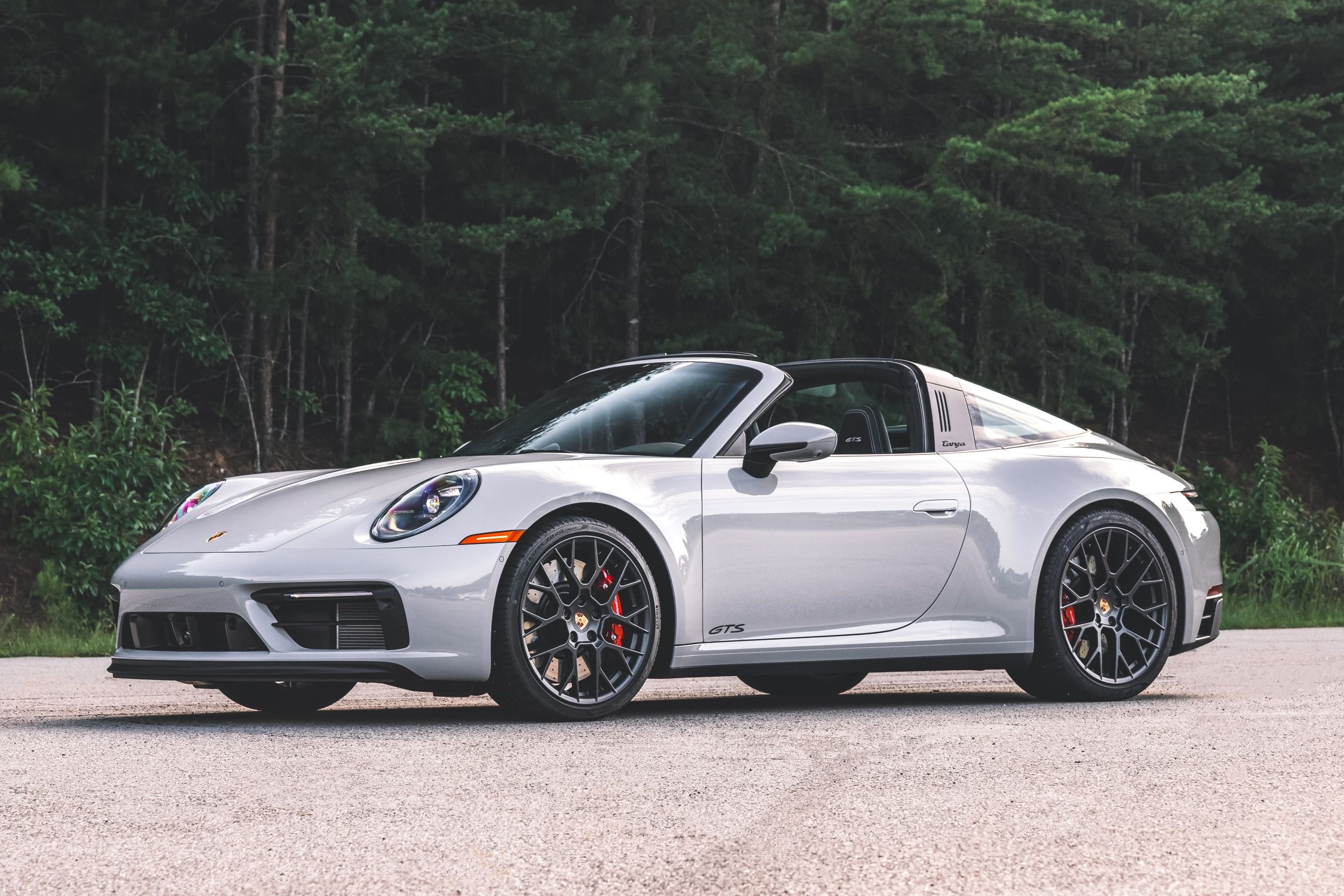
This special 1972 911 2.4 Targa has been handed a nut-and-bolt restoration by the expert workers of Porsche Design. The tasteful open-top sports car is now on display at the company's museum in Stuttgart next to the recently revealed Porsche 911 Design 50th Anniversary Edition. The two will form part of an exhibition that commemorates the Porsche Design division's five-decade-long history of creating bespoke products for exclusive customers. Ferry Porsche's two sons, Ferdinand Alexander and Hans-Peter Porsche, founded Porsche Design in 1972.
The Targa on display has been specified to suit the preferences of company founder Ferdinand Porsche. His love for dark shades is exactly what motivated the choice to use black abundantly throughout the exterior and interior of the car. Outside, a set of Fuchs rims finished with an anodized shade has been fitted to contrast the paint together with a platinum satin finish applied to the flanks and roll bar.
The professor's very own signature has been applied to the engine cover together with a 'Porsche Design 50th Anniversary' badge. Inside, the restoration division opted to contrast the black leather upholstery with a Cool Grey checked Sport Tex fabric. To further commemorate the model, the anniversary badging has been applied to the car's document folder and tool kit bag. A finishing touch comes in the form of a key pouch which is placed in a special presentation box.
The donor car provided to Porsche was not in the finest condition, which is exactly what made it the ideal canvas. Thus, the experts at Porsche Classic stepped in to upgrade both the engine and chassis so that it met the S trim specification. This includes the implementation of a naturally aspirated 2.4-liter flat-six engine that benefited from a then-advanced mechanical gasoline injection system. In its heyday, this would have provided 187 horsepower at 6,500 rpm.
Usually, Porsche Design is provided with an original production sheet that gives the team a clear vision of what the restored model needs to look like when complete. With this particular unit though, there was a lot more freedom as the brief required the department to create something that represents the best of its skill and values. While the restoration process of the Targa was a fluid one, the team admits that the interior was on the challenging side.
The seat cover in particular is clothed with modern materials that had to meet the car's original interior dimensions. This was a puzzle of sorts because the finishes with improved strength and elasticity had to be adapted to frames and structures that were designed 50 years ago. "Fortunately, we have an extremely experienced upholsterer in our team who took on the challenge with the help of some templates and test parts," says Uwe Makrutzki, Head of Porsche Classic Factory Restoration.
This particular Targa was selected for the restoration project simply because the unit was produced in 1972. The company notes that it is classified as the very first 'safety cabriolet' because of the roll-bar that stretches almost eight inches wide. The brand's whole reason for putting this model together was because it wanted to prove to the American market that cabriolets could be safe.
The exhibition that has been put together for these two models at the company's museum is just as special. Together with the two Targas, Porsche Design will be showcasing two of its Chronograph 1 watches. The first is the 1972 Limited Edition that complements the classic model while the latter is the 911 Edition 50 Porsche Design which will be sold together with the special edition Targa.
While the brand's cars are particularly popular among fans, Porsche Design reminds us that its unique pieces have been subjected to several prestigious awards. Included in its list of victors is its 'P'8478' aviator sunglasses, 'P'9521, cellphone, and the, P'3613, tobacco pipe. Porsche's Monobloc Actuator watch series, which benefits from fully integrated stopwatch pushers, was also a recipient of a design reward. These have all been put on display alongside the two sportscars.
The exhibition is rounded off with a selection of cars that defined some of the many eras that Porsche has experienced. This includes the 904 Carrera GTS, which the professor described as a masterpiece himself, together with the 993 911 Speedster. The entire display will be available to view until July 10.
